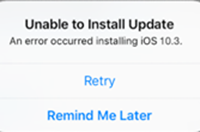Android Data Recovery
A good content strategy is very important to drive traffic to your website. Effective content strategy can be created by a clearly defined goal.
So you've decided to create a blog for your company. Maybe it's because an article you read convinced you of its benefits to your business. Or you've developed a desire to share more detailed information about your company's products or services than a landing page website would allow and add to that current news in your industry and information on getting the best out of your company's product or services. Whatever your reason is, you will have to provide consistently fresh and useful content. Your blogs content has to be of a high quality, engaging and current every time. You cannot achieve this without a plan. Assignment writing service said that you need make guidelines and standards must be set that would guide consistent production of such content. This set of guidelines and standards is what we call a Content Strategy. And a good content strategy while writing a blog or article for your business is very important to drive traffic to your website.
Before a good content strategy can be created you must have a clearly defined goal. Write a vision and mission statement and make sure everyone involved in running your blog understands it fully. This point cannot be over-emphasized.
Now that we have that covered, let's go ahead and look at what makes up a good content strategy.
Target Audience: This one seems pretty obvious: know your customers. Narrowing down who you should be creating content for out of the multitude of online visitors is very important. It saves you from a lot of wasted effort and allows you work with clear direction. Aiming your contents at just anybody can be exhausting and is tantamount to trying to please everyone, which as we all know, is impossible. Ask yourself these questions: Who are they, where are they, what do they consider valuable, when and why do they need my product/service, and how do they access it. Only when you can answer all of these questions with certainty have you truly identified your target audience.
Content: What is content? Is content text, visuals, audio or a combination of these? What will your content be? Articles? If so what kind of articles? News articles, how-tos, case studies, tips? Are you going to use visuals? If so how and when should they be used? Are you going to be using videos? For you to have a good strategy you need to know what kind of content you're creating a strategy for.
Voice and Brand Definition: This is the tone or writing style that you employ in creating and writing your content. For example, textbooks are usually written with an objective tone which includes facts and reasonable explanations. The objective tone is matter-of-fact and neutral. On the other hand, fiction and personal essays are usually written with a subjective tone. A subjective tone uses words that describe feelings, judgments, or opinions. The details are likely to include experiences, senses, feelings, and thoughts. Whatever tone or style you choose must appeal to your target audience. It should also be reflective of your customer relations. The words and details used in writing should express your brand and how you want to be perceived by your audience.
Content Sourcing Plan: This is the bedrock of a good content plan. As mentioned before, your content needs to be useful, engaging and fresh. This requires brainstorming and testing out a few different options. Original content is what truly sets blogs apart. You also need to determine your research sources. Are you using news sites? Other blogs? What is your inspiration? These sources need to be credible and trustworthy and cited in your articles.
Taxonomy: Taxonomy is how your content is going to be organized on your blog. A system for creating headings, tags, title, categories and metadata need to be created beforehand. Each of these contributes directly to your SEO strategy, so decide on your keywords and use them where you can.
Production Process: This is a step-by-step guide that would guide the creation of content to ensure that content writers and creators meet the standards you've set. A production process should contain what should be done when it should be done and how it should be done. It is an actionable script that should encompass all of your content strategy.
A content strategy without all the plans discussed above would be incomplete and ineffective. In many cases where a content strategy is found to be faulty, the cause could be linked to the absence of one or more of them or a vague attempt at creating them.
As a final tip, here are some best practices to help you create meaningful and relevant content. Each piece of content should:
• Reflect your organization's goals and user's needs.
• Understand how user's think and speak about a subject.
• Communicate to people in a way that they understand.
• Be useful.
• Stay up-to-date and remain factual.
• Be accessible to all people.
• Be consistent.
• Be able to be found.
• Help define the requirements for the overall site.




















